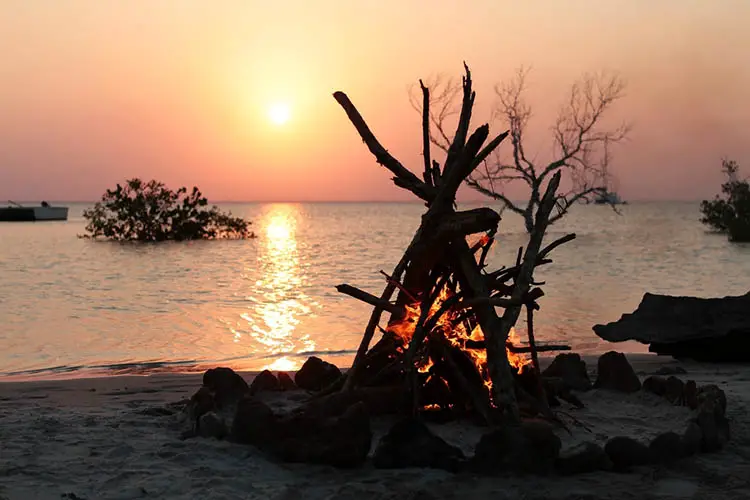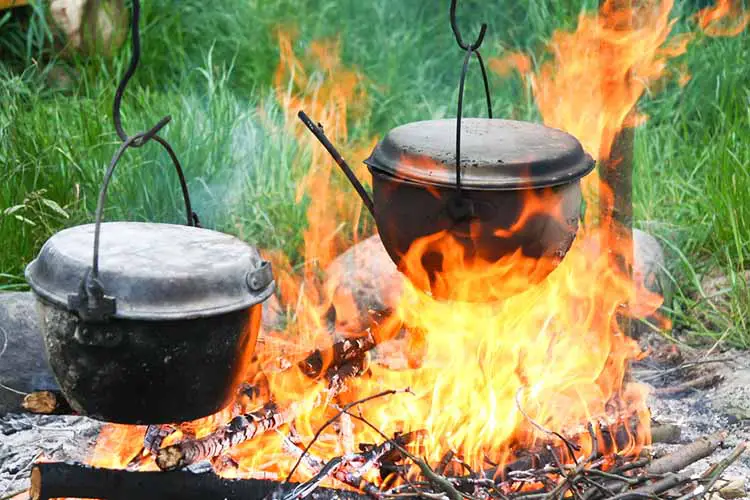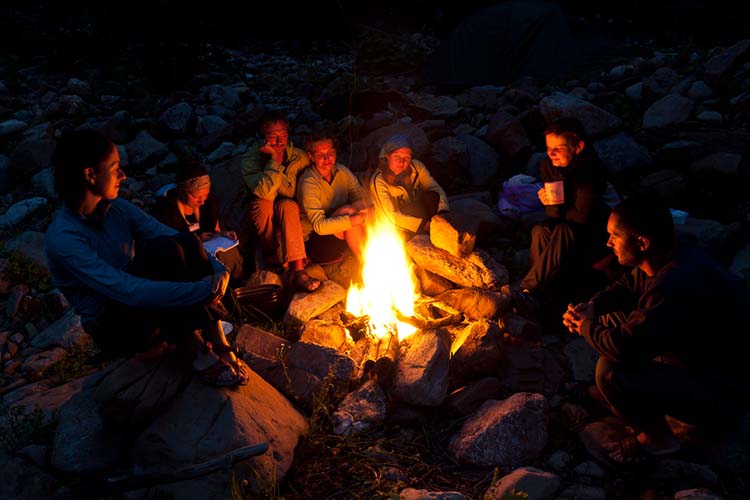Whether you’re going camping, hosting friends around the fire pit, or just lighting a fire in your wood burning stove at home, you’ll need some skills on how to build a good fire. The way you lay a fire (which means the method you use to build it) will determine how well it burns. Like your house, you need a solid foundation to build from.
There are different fire-building techniques that you may use depending on your situation and the weather conditions. We break down the 5 best ways to build your fire and what you need to get started.
Fire-Building Readiness
Here are some of the essentials you’ll need before you get started.
Tinder
Tinder is the good stuff that’s going to get your fire started. You can use a variety of materials including paper, twigs, shaved wood, birch bark, newspaper, dryer lint, and cardboard. For emergency use, you could stuff dryer lint into paper or cardboard (like an empty toilet roll) to ignite your fire which is a great option if you’re outside and all the tinder is wet. There are also commercially made fire starters which are good to have on hand if you’re having trouble getting things started. Tinder burns fast and hot and is the base for your kindling.
Kindling
Kindling is the smaller pieces of wood you’ll need between your tinder and the main fuel. If you jump from tinder to logs, you’ll find out the hard way that your fire isn’t going to survive. Use smaller pieces of your fuel wood (think the size of a ruler) to get your fire going before you fuel it.
Fuel
Fuel wood is what will keep your fire burning and create heat. The fuel doesn’t have to be huge logs which can be harder to ignite – think about splitting big logs in half so the fire starts more easily. And of course, wood needs to be dry.
Safety
To start a fire responsibly, create a fire-friendly spot. Make sure the surrounding area is clear of flammable materials before starting to build your fire. If you’re starting a fire outside whether camping or in a fire pit, make sure you are permitted to light a fire in your selected location and there are no fire restrictions. Also, be aware of wind conditions before starting a fire.
Place your tinder at the bottom and cover it in kindling. You will build your fire on top of this.
Different Ways to Lay a Campfire
Depending on your situation, the wood and materials available, and your personal preference, there are five main ways to construct a fire.

Teepee
The teepee method is popular for bonfires. It lets the fire rise high, creating a beautiful column of flame for everyone to enjoy. Begin by placing your tinder in a bundle in the center of your fire pit. Stick a few supporting pieces into the ground to support your teepee. Then lean sticks against your supports going around them to create the iconic teepee shape. If you have a metal pole, this may be useful as a lasting support that won’t burn. Add extra sticks as needed to keep the fire going strong. This shape makes the most of fire’s tendency to project heat upward. It casts light far and wide and is great for outdoor parties and group activities.
Advantages
- High flame
- Broad light
- Highly visible
Disadvantages
- Least long-lasting
- Difficult to cook over
- Least safe, as it may fall
Log Cabin
The log cabin style of fire building is popular for beginners since it’s easy to build and maintain. It creates a solid base of heat for practical use. It is excellent for cooking and is very practical. Begin by placing your kindling in a tight bundle just as before. Then place a square formation of sticks around the kindling and lay them on top of each other, corner over corner, just the same way that a log cabin is built. Once your structure is higher than the kindling, begin placing rows of sticks in cross-hatch fashion over the top of your fire base. As this structure burns, it will collapse into the kindling. To maintain the fire, simply continue to build your log cabin on top of the existing flame.
Advantages
- Easy to build
- Easy to cook over
- Least likely to spread flame
Disadvantages
- Kindling base is difficult to access
- Harder to maintain as it dies down
Lean-to
This style of fire building is similar to the teepee method. But it has the benefits of both log cabin and teepee style campfires. The lean-to method has the added benefit of leaving one side open to the air and allows you to add more kindling to the base as needed. Begin by creating a support just as you would for a teepee-style fire. But instead of sticking your support straight down into the ground, use a strong supporting stick at an acute angle. Shove the support stick into the ground deeply and firmly. Then lay sticks along the sides of this support stick and form your kindling base beneath this structure. Again, a metal pole might be the best choice for the supporting stick since it won’t burn.
Advantages
- Can be very long-lasting, with a non-flammable support beam
- Good for projecting heat in a specific direction
- Easy to maintain
Disadvantages
- Can be dangerous if the support collapses suddenly

This is a good fire for cooking over as it uses two parallel logs to create a base to hold your pot for cooking. Find two equal size logs and place them parallel to each other in V shape. Build your teepee fire in between the logs and fuel the fire until it’s nice and hot until you can spread the coals for cooking.
Advantages
- Great for cooking
- Good wind protection
Disadvantages
- Takes longer to create coals
- Doesn’t create much warmth
Pyramid Fire (aka the “Council” or “Upside-down” fire)
The pyramid fire uses two small logs parallel to each other. On top of the parallel logs, place a solid layer of small logs and keep adding smaller layers in opposite directions to the one below it. Keep repeating this structure with the wood getting smaller as you go up. Light a starter fire with kindling on top of the pyramid structure. As the fire burns, it will ignite the layers below it – burning the fire in a downwards fashion.
Advantages
- Requires little to no attention
- Can burn big and long
- Good for larger groups
Disadvantage
- Requires a lot of fuel wood
Like any good survival skills, it takes practice to be able to build a lasting fire reliably that will put out enough heat and light. Try the different methods and practice until you find your favorite one.


